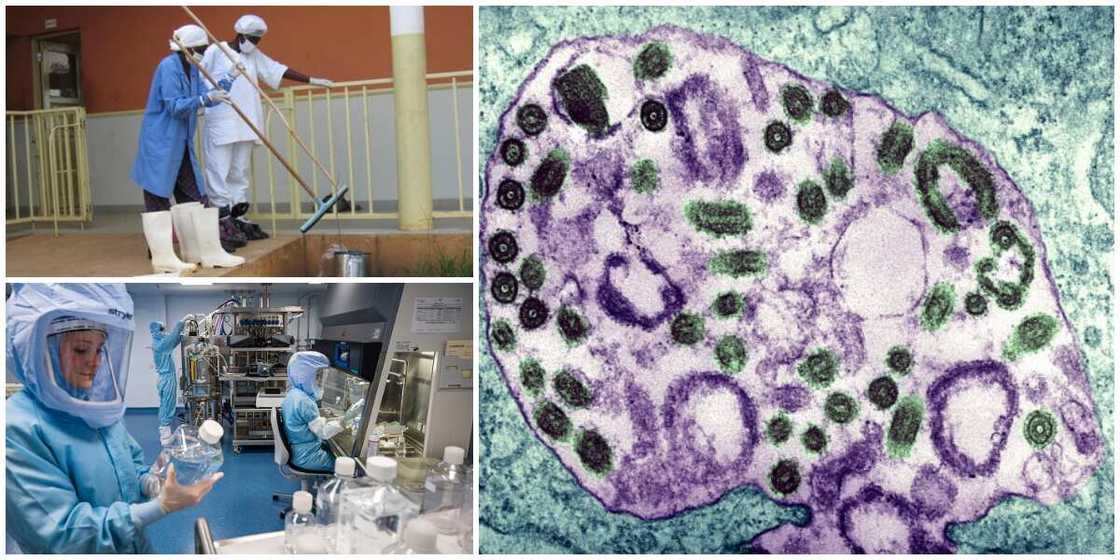Marburg Virus: 4 Real Truths about the Extremely Dangerous Disease Many Fear May be the Next Pandemic
The Marburg virus was first discovered in German cities of Marburg and Frankfurt and the Yugoslav capital Belgrade in 1967 but has taken the centre of medical discus in recent times owing to a life it has claimed on the African continent.
PAY ATTENTION: Click “See First” under the “Following” tab to see Legit.ng News on your Facebook News Feed!

Source: Getty Images
Al Jazeera reports that Guinea recently confirmed that a man had passed away from the Marburg that is said to be associated to the deadly Ebola virus.
Legit.ng presents in this article 4 truths about the extremely dangerous virus that seems to be rearing its ugly head on the planet again.
1. It can spread through human-to-human contact
Described by the World Health Organization (WHO) as extremely dangerous, Marburg virus can be spread through direct human-to-human contact.
PAY ATTENTION: Join Legit.ng Telegram channel! Never miss important updates!
This can be either via blood, secretions and other bodily fluids of infected people.
When one comes in contact with surfaces and materials that have been contaminated such person can get infected.
2. The highest human death recorded in a year since its discovery is over 200
Wikipedia reports that since the virus got its name in 1967, the highest ever recorded deaths caused by the virus in a single year is 227.
The 227 deaths were recorded between 20904-2005 in Angola. Durba and Watsa, Democratic Republic of the Congo recorded the second highest with 128 deaths but this was at a span of 1998-2000.
3. Symptoms of Marburg virus
According to WHO, symptoms of the deadly virus include but not limited to severe headache and severe malaise, watery diarrhoea, abdominal pain and cramping.
Patients may also experience severe haemorrhagic manifestations within the first 7 days coupled with fresh blood in vomits and faeces and spontaneous bleeding at venepuncture sites.
4. There is no cure for the virus yet
The virus is yet to have a cure.
At the moment, measures that can be taken when one is infected, according to Centre for Disease Control and Prevention (CDC), include balancing the patient's fluids and electrolytes, replacing lost blood and clotting factors and maintaining oxygen status and blood pressure.
Lagos state places 14 countries on COVID-19 watchlist
Meanwhile, Legit.ng previously reported that Lagos state had placed 14 countries on COVID-19 watch-list.
This was contained in a press release made by Professor Akin Abayomi, the commissioner for health in Lagos.
He said:
“From the Lagos perspective, we’re also looking at what we describe as Amber Colour countries, where we know that mutants are circulating. And this is important for us to be able to define how strict our monitoring of your isolation at home and how your testing is performed..."
Source: Legit.ng




